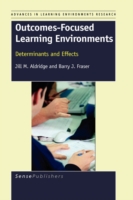Full Description
Between 2002 and 2016, the federal government, state governments, and school districts undertook unprecedented measures to improve the lowest-performing schools. This book draws on dozens of actual examples to illustrate the wide range of interventions adopted over this time period. Among the initiatives examined in depth are efforts by states to provide technical assistance to schools and districts, offer students educational choices, engage communities in school improvement, take over low-performing schools and districts, create special state-run school districts, and close failing schools. Also discussed are district-initiated measures, including programs to standardize instruction, innovative approaches to raising student achievement, and restructuring of district operations. The book concludes with an assessment of 15 years of turnaround initiatives and recommendations based on lessons learned over this time period.
Contents
Table of Contents
Introduction
Section I: The Making of a Mission
Chapter 1: The Evolving Role of the Federal Government in Helping the Lowest-performing Schools
Chapter 2: "If You Can Turn Around Buffalo, You Can Turn Around Anything"
Section II: The States' Growing Impact on the Lowest-performing Schools
Chapter 3: State Takeovers and the Complexities of Policy Making for the Lowest-performing School Districts and Schools
Chapter 4: An Alternative Form of State Takeover: The Special State District for Low-performing Schools
Chapter 5: Technical Assistance and Training
Chapter 6: Choice, Community Action, and Closure
Section III: Local Responses to State and Federal Pressure to Help the Children Left Behind
Chapter 7: One Best Way to Leave No Child Behind
Chapter 8: Local Innovation and Options: A Better Prescription?
Chapter 9: Developing District Capacity to Support School Turnarounds
Section IV: Reflections on America's Struggle to Improve Its Lowest-performing Schools
Chapter 10: Reviewing an Equivocal Verdict
Chapter 11: Thinking about the Path Ahead








